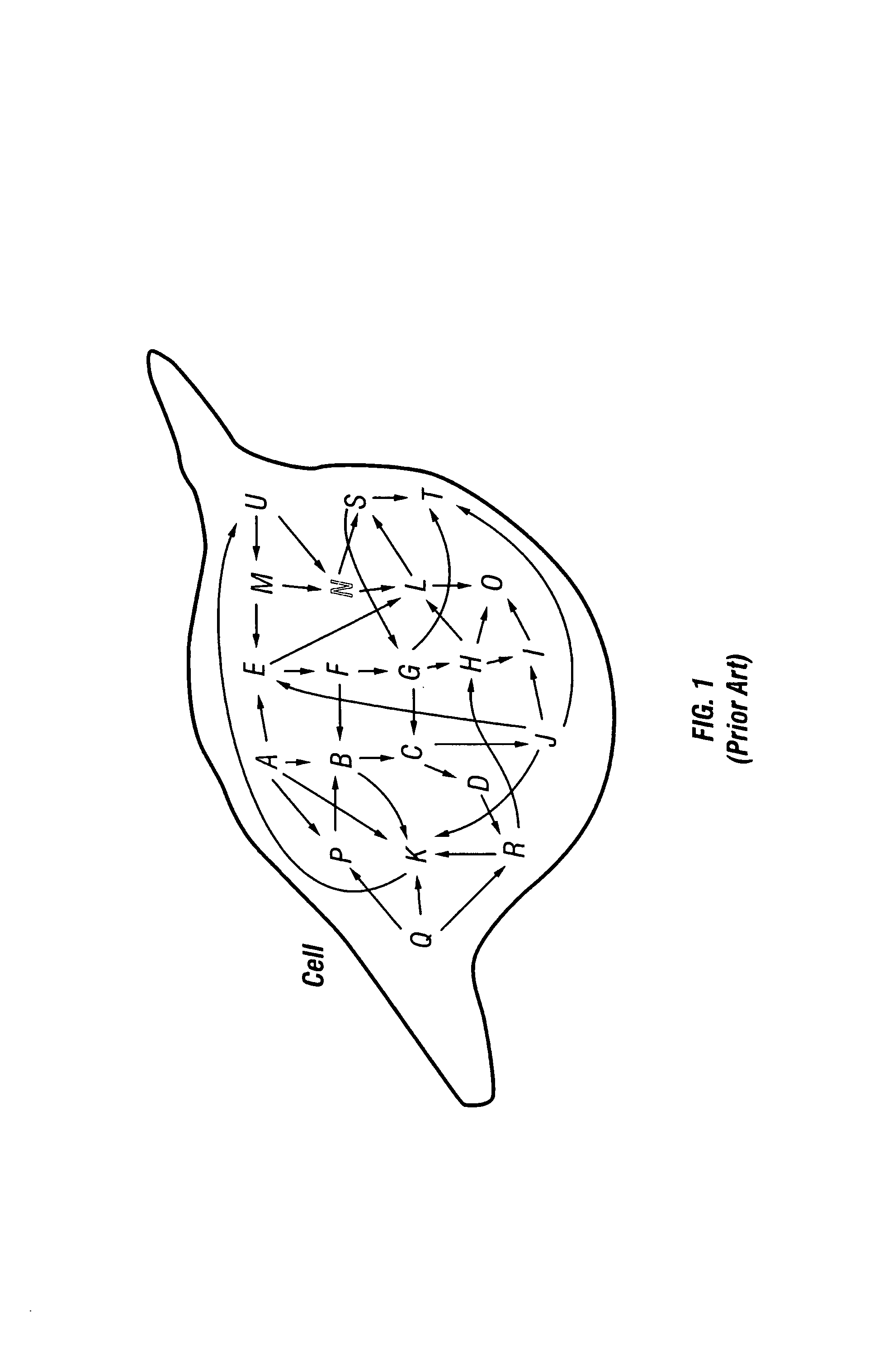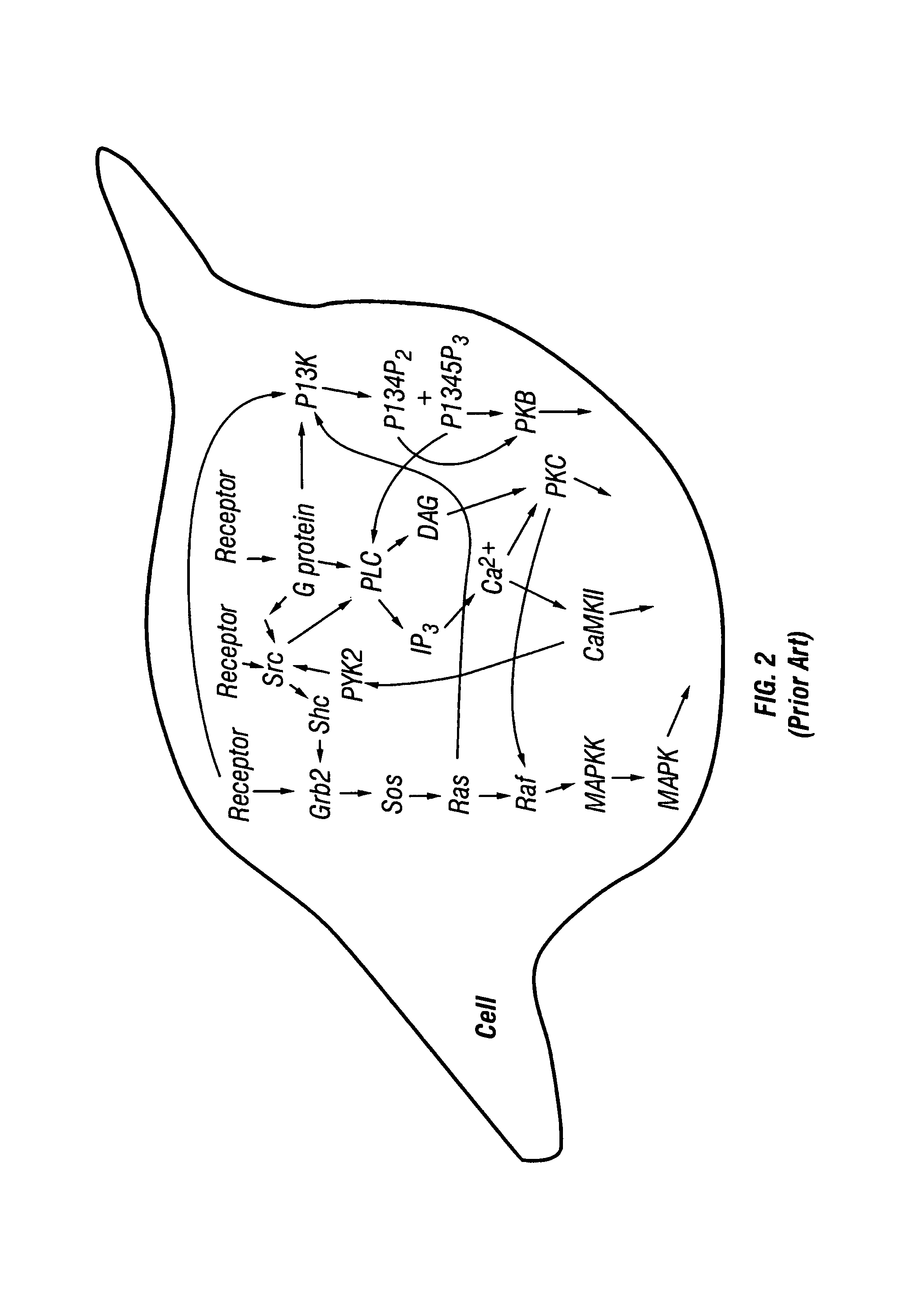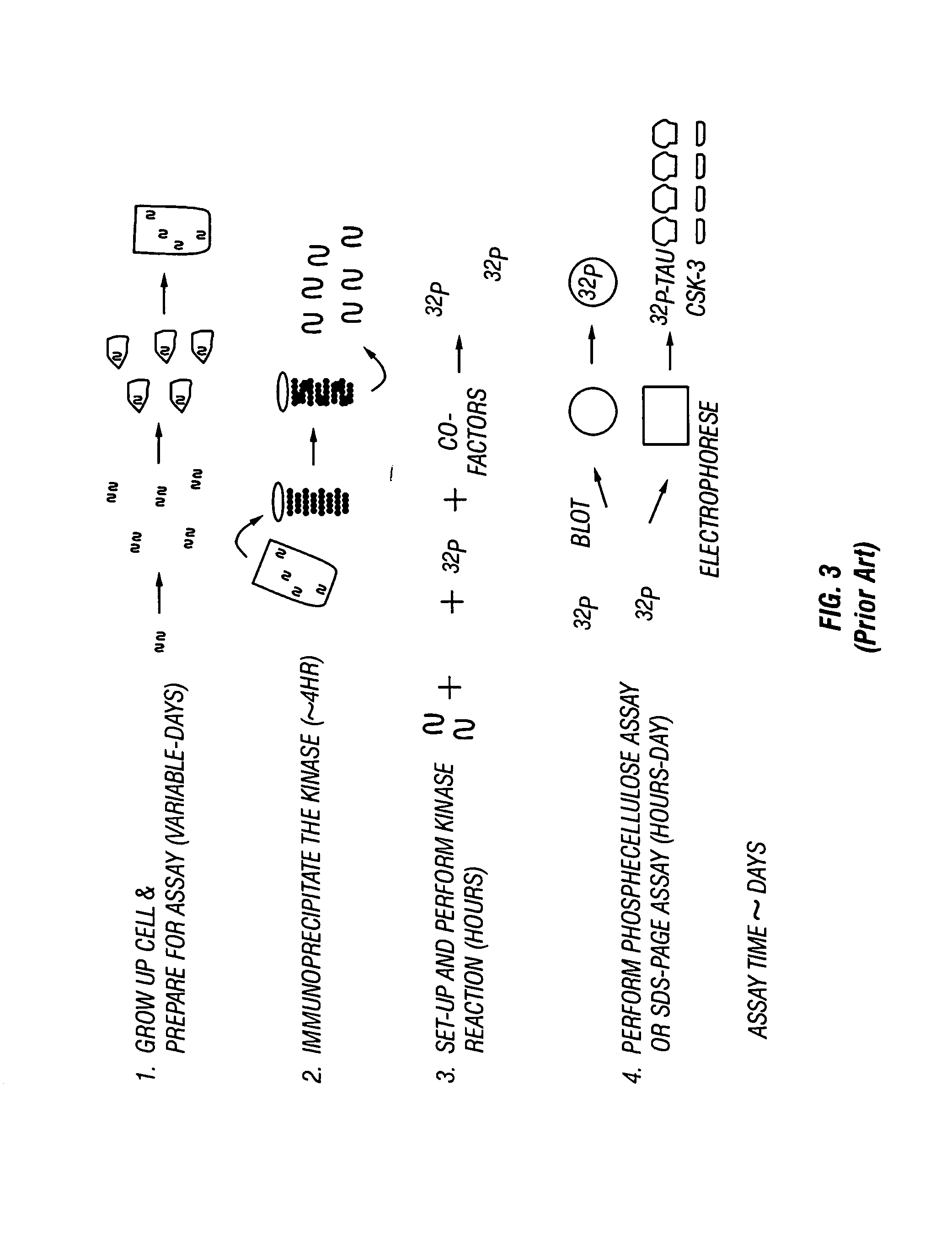Method to measure the activation state of signaling pathways in cells
a signaling pathway and activation state technology, applied in the field of biological and chemical analysis of molecules in cells, can solve the problems of inability to detect the activity of one or more additional proteins within the cell, and inability to detect the activity of one or more additional proteins in the cell
- Summary
- Abstract
- Description
- Claims
- Application Information
AI Technical Summary
Benefits of technology
Problems solved by technology
Method used
Image
Examples
Embodiment Construction
[0061]The activity of multiple proteins in a single living cell, portion of a cell or in a group of cells are simultaneously examined. A database is compiled from the application of this method to cells under a large variety of different conditions. The protein activity is measured by introducing one or more reporter molecules (substrates) into one or more cells. The reporter(s) is chemically modified by the enzyme of interest. In some cases the enzyme(s) of interest is affected by the addition of a stimulus or a pharmaceutical compound to the cell. The reactions between the enzymes and the reporters are diminished or terminated, and the reporter and modified reporter are removed from the cell. The activity of the enzyme(s) is determined by measuring the amount of reporter molecules remaining, by measuring the amount of altered reporter molecules produced, or by comparing the amount of reporter molecules to the amount of altered reporter molecules. A database is compiled of the acti...
PUM
| Property | Measurement | Unit |
|---|---|---|
| time | aaaaa | aaaaa |
| time | aaaaa | aaaaa |
| time | aaaaa | aaaaa |
Abstract
Description
Claims
Application Information
 Login to View More
Login to View More - R&D
- Intellectual Property
- Life Sciences
- Materials
- Tech Scout
- Unparalleled Data Quality
- Higher Quality Content
- 60% Fewer Hallucinations
Browse by: Latest US Patents, China's latest patents, Technical Efficacy Thesaurus, Application Domain, Technology Topic, Popular Technical Reports.
© 2025 PatSnap. All rights reserved.Legal|Privacy policy|Modern Slavery Act Transparency Statement|Sitemap|About US| Contact US: help@patsnap.com



